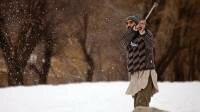With a population of around 6,000, the Kalash tribe is the smallest group amongst the ethnic and religious minorities of Pakistan. Unlike other minorities, they live exclusively in a particular geographical area — the three valleys of Birir, Bumburet and Rumbur known locally as Kafiristan (The Pagan Land).
Kafiristan is situated in the Hindu Kush between the Afghan border and Chitral valley. Until 1896, Kafiristan also included the present day Nuristan in Afghanistan. The Kalash are said to have descended from Alexander the Great’s brave general Shalak Shah of Tsiam to whom Alexander gave the Chitral valley as a reward. This however, is not clearly established.
Kalasha language is of great interest to linguists as it has a strong connect with the ancient Dardic branch of the Indo-European languages, suggesting a Central Asian origin. However, it has been declared critically endangered by Unesco.
Around 1500AD, the Kalash were dominant throughout southern Chitral — the Kalasha oral tradition mentions eight great Kalasha kings.
Local people outside the valleys often find remnants of buildings revealing evidence of former Kalash settlements.
The people of Kalash clearly differ from the surrounding cultures of Pakistan and the rest of the world in their way of life — attire, rituals, language being the salient features. Some Greek volunteers in the valleys once described them as “the cultural heroes of the 21st century.”
The Kalasha way of life is finely balanced, allowing both men and women freedom of expression and action. Unlike other communities in Pakistan, the Kalasha society is not male-dominant; they countenance no discrimination based on gender.
The pictorial here depicts a very interesting traditional sport played in Kalash: the game of the valleys Bamburt, Birir and Rumbur known as ‘Hem Gaal’, meaning Snow Golf.
This sport came from the tribe of Bashagali. It is played in snow more than 3-4 feet high and an area stretching over 3-4 kilometers. Even today, the traditional method is followed: a black ball made out of animal fat and coal so that it can be seen in the white snow and doesn’t get wet.
One of the major rules of the game is not to touch the ball with the hand. Hem Gaal is played between villages; every village has a team which consists of 24 players. The team that wins receives a bull as prize!
This winning team then goes back to their village and slaughters the bull to cook it for the entire village. The celebration is carried out the whole night by singing and dancing.
Another intriguing ritual of the sport is ‘Mehtar Nashek’ which involves choosing a king from the winning team when the game ends. The chosen one remains the king of the entire valley for 24 hours.
In those 24 hours, the king is allowed to make any demand(s), making it incumbent upon the villagers to accede to these. If they do not, they are punished. The word Mehtar literally means a king.
The exquisite culture, complete with music and dance and the pure joy one sees on their faces, is endearing. Whenever I go out there I feel like I have been a part of this place for centuries.























